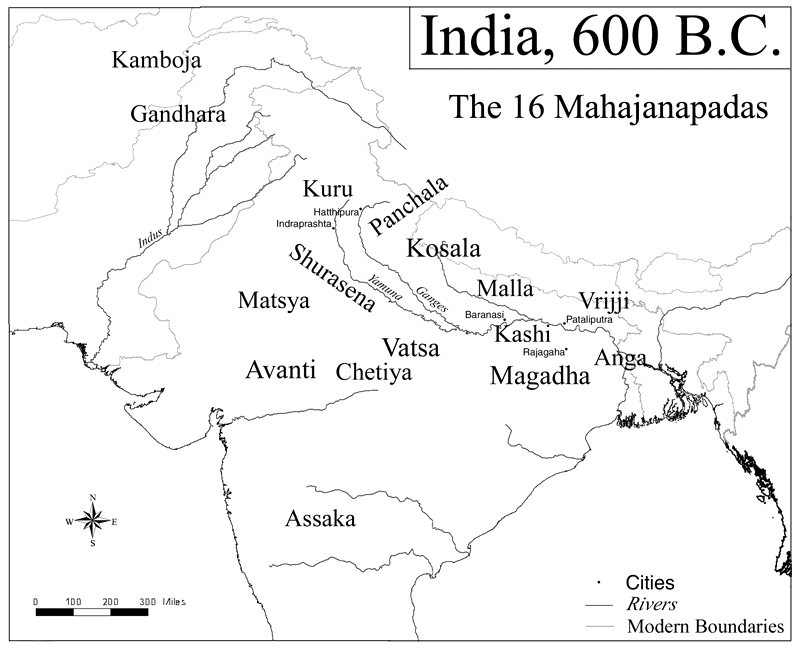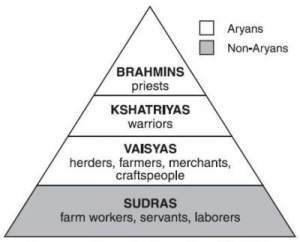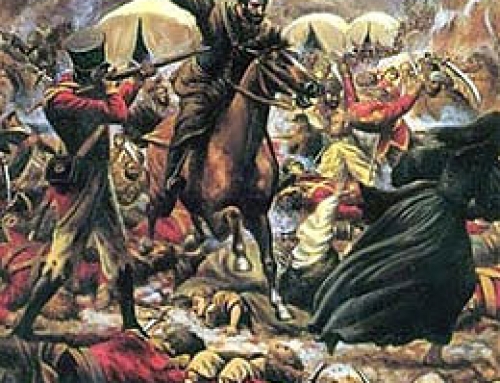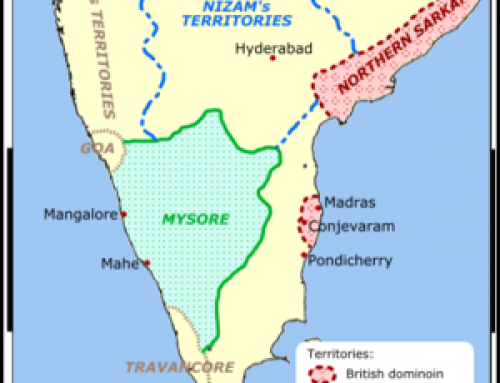The Vedic Civilization was the culture and traditions of the society prevalent during the Vedic age ( 1500- 600 BCE). In various examinations which have a section of general studies, often ask a question or two about the Vedic civilization. This chapter of the history study material & notes is meant to cover the essential and exam-worthy details of the ancient Vedic period.
It should be noted here that after the decline of Indus Valley civilization by 1500 BCE, the next wave of civilization began to take shape in form of Aryan occupation of Indo-Gangetic plain.
The Aryans:
- Typically, the age of Aryans is known as the Vedic age because the four major Vedas were created in this time.
- The word Aryan is derived from the Sanskrit word “arya” which means noble, not ordinary.
- They arrived from russian steppes, as is believed and agreed to by majority historians.
- But various scholars voice different opinion about thier origin. Bal Gangadhar Tilak argued that Aryans came from the Arctic region following their astronomical calculations.
- It is generally agreed that they spoke Indo-Aryan Language, Sanskrit.
- They were semi-nomadic, pastoral people, who led a rural life as compared to the urban Harappans.
<<<<<Read about Harappan Civilization here >>>>>
Vedic Literature:
- The term Veda means “superior knowledge” in Sanskrit.
- Four major Vedas constitute the vedic literature. They are – Rig Veda, Yajur Veda, Sam Veda, and Atharva Veda.
- Rig Veda – Earliest veda. Has 1028 hymns in praise Gods.
- Yajur Veda – Has details of rules to be followed during sacrifices.
- Sam Veda – Has a collection of songs. The origins of Indian music are traced to it.
- Atharva Veda – has a collection of spells and charms.
- Besides these Vedas, there were Brahmanas, Upnishads, Aryankas, and epics- Ramayana and Mahabharata.
- Brahmanas – Prose about vedic hymns, rituals and philosophies.
- Aryankas – Deal with mysticism, rites and rituals.
- Upnishads – Philosophical texts dealing with soul, mysteries of nature.
- Ramayana was authored by Valmiki.
- Mahabharata was written by Ved Vyasa.
Classification of Vedic Period:
The period of Vedic Civilization(1500-500 BCE) is divided into two broad parts –
- Early Vedic Period (1500-1000 BC), also known as Rig Vedic Period.
- Later Vedic Period (1000- 600 BC).
We will study the following features of the Vedic Civilization under these two periods.
Political Organisation in Vedic Age:
In Early Vedic Age:
- ‘Kula‘ was the basic unit of political organization.
- Multiple families together of kinship formed a ‘grama‘.
- Leader of ‘grama’ was ‘Gramani‘.
- Group of villages were called ‘visu’, headed by ‘vishayapati‘.
- The highest political and administrative unit was ‘jana‘ or tribe.
- There were several such tribal kingdoms – Bharatas, Matsyas, Yadus and Purus.
- The head of kingdom was ‘Rajan‘ or king.
- The Rig Vedic polity was hereditary monarchy normally.
- There were two bodies- Sabha(council of elders) and Samiti(general assembly of people).

In Later Vedic Age:
- Larger kingdoms by amalgamation formed ‘Mahajanapadas or rashtras‘.
- Therefore, the power of king increased and he performed various rituals and sacrifices to make his position strong like Rajasuya (consecration ceremony), Asvamedha (horse sacrifice) and Vajpeya (chariot race).
- The kings assumed titles of Rajavisvajanan, Ahilabhuvanapathi(lord of all earth), Ekrat and Samrat (sole ruler).
- But, importance of the Samiti and the Sabha diminished.
Society in Vedic Civilization:
In Early Vedic Age:
- The Rig Vedic society was basically patriarchal.
- The basic unit of society was ‘graham’ or family, its head was called as ‘grahapathi’.
- Monogamy was practiced while polygamy among royal and noble families was observed.
- Women had equal opportunities as men for their spiritual and intellectual development. Apala, Viswavara, Ghosa and Lopamudra were women poets.
- Women could attend the popular assemblies.
- No child marriage, sati practice.
- Social divisions were not rigid.

In Later Vedic Age:
- The Varna system became prevalent- four divisions of society :Brahmins, Kshatriyas, Vaisyas and Sudras.
- A Brahmin and Kshatriyas occupied a higher position than others.
- Various sub-castes on the basis of occupation emerged.
- Women were considered inferior and subordinate to men now and also lost their political rights of attending assemblies.
- Child marriages became common.
Economic Conditions in Vedic Civilization:
In Early Vedic Age:
- The Rig Vedic Aryans were pastoral, cattle rearing people.
- After they permanently settled in North India they began agriculture.
- Carpenters produced chariots and ploughs.
- A variety of articles with copper, bronze and iron were made by workers.
- Spinning was an important occupation – cotton and woolen fabrics.
- Goldsmiths made ornaments.
- The potters made different kinds of vessels for domestic use.
- Trade was conducted by barter system in begining but later shifted to use of gold coins called ‘nishka‘ for large transactions.
- Rivers acted as means of transport.
In Later Vedic Age:
- More land was put under cultivation by clearing forests. Knowledge of manure saw development.
- Hence, Agriculture became the chief occupation of people growing barley, rice and wheat.
- Industrial activity became specialized with metal work, leather work, carpentry and pottery advancement.
- Internal trade as well as foreign trade also became extensive (they traded with Babylon through sea).
- Hereditary merchants (vaniya) came into existence as a different class.
- Vaisyas indulged in trade and commerce organized themselves into guilds known as ‘ganas‘.
- Coins: Beesides ‘nishka’, ‘satamana’– gold coins and ‘krishnala‘ – silver coins were also used as a media of exchange.
Religion in Vedic Period:
In Early Vedic Age:
- Rig Vedic Aryans worshiped natural forces like earth, fire, wind, rain and thunder by personifying them into many gods.
- Some important Rig Vedic gods – Prithvi (Earth), Agni (Fire), Vayu (Wind), Varuna (Rain) and Indra (Thunder). And ‘Indra’ was most popular. Next came ‘Agni’ – an intermediary between the gods and the people.
- ‘Varuna’ – the upholder of natural order.
- Female Gods – ‘Aditi’ and ‘Ushas’.
- No temples and no idol worship.
- Prayers were offered to gods for rewards.
In Later Vedic Age:
- Indra and Agni lost their importance.
- Prajapathi (the creator), Vishnu (the protector) and Rudra (the destroyer) became.
- Sacrifices and the rituals became more elaborate.
- But the importance of prayers declined.
- Priesthood became a hereditary profession. They dictated the rules for these rituals and sacrifices.
- Therefore, by the end of this period there was a strong reaction against this priestly domination (also against elaborate sacrifices and rituals). This led to the rise of Buddhism and Jainism.





Simplified form notes of Tamil Nadu publications books…..more useful
Thank you madam
How can I download these materials in pdf format?
Excellent Mam……. Done a great job….. ????
Thank u
Very helpful.exlent
I wanna know when GOLD COINS was as such used for first time?
U have mentioned about niksha here
But kushans were the first to issue gold coins … as per ncert ..
Kindly clear my doubt !!!
I think gold coins were used first time in GUPTHA PERIOD
Thank u mam
thank u
helpfull
nice work
thank mam
thank you mam for sharing your knowledge with me .even I am a civil service aspirant like you. your notes are very much useful during revision . thank you
This is very concise and systematic description of the whole vedic period in one go, while covering all important details and yet not overwhelming. Thank you soon much for this effort.
Thank you madam this was really helpful